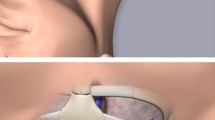Abstract.
Ultrasound guidance for percutaneous puncture of the internal jugular vein provides many advantages over the classic landmark-guided technique, particularly in complicated cases (e.g. thrombocytopenia, obesity, dyspnea). The present prospective investigation involved analysis of 493 punctures and provides patient- and operator-dependent variables with respect to the impact on puncture success and the complication rate. These 493 punctures of the internal jugular vein were performed using identical puncturing equipment and a standardized two-operator catheterization technique and were prospectively recorded on the hematology-oncology ward of a university hospital. Alongside success rates, the frequency and nature of complications, patient-inherent risk variables (obesity, thrombocytopenia, patient cooperation, vein diameter, etc.) and the individual experience of the physician performing the puncture and ultrasound were analyzed with respect to possible impact on success and complication rate. Internal jugular vein cannulation was successful in 94.5% of all patients. Catheter placement was successful at the first attempt in 87.6% of cases. Arterial fail punctures occurred in 1.4% of the patients and local hematoma in a further 4.3%. Among the patient-dependent variables, only poor patient compliance and a maximum vein diameter smaller than 7 mm showed a negative influence on the success rate. The experience of the physician carrying out the puncture influenced neither the success rate nor the complication rate. In contrast, both failure and complication rates were significantly lower when the physician guiding the sonographic probe was familiar with the method. Ultrasound-guided cannulation of the internal jugular vein provides safe central venous access with high success rates and low complication rates. Difficulties due to patient-inherent risk factors (e.g. thrombocytopenia, obesity, dyspnea) can be managed well using ultrasonographic guidance. The success rate achieved and the frequency of complications are decisively influenced not by the experience of the physician performing the puncture, but by the experience of the physician acting as sonographer.
Similar content being viewed by others
Author information
Authors and Affiliations
Additional information
Electronic Publication
Rights and permissions
About this article
Cite this article
Mey, .U., Glasmacher, .A., Hahn, .C. et al. Evaluation of an ultrasound-guided technique for central venous access via the internal jugular vein in 493 patients. Support Care Cancer 11, 148–155 (2003). https://doi.org/10.1007/s00520-002-0399-3
Issue Date:
DOI: https://doi.org/10.1007/s00520-002-0399-3




